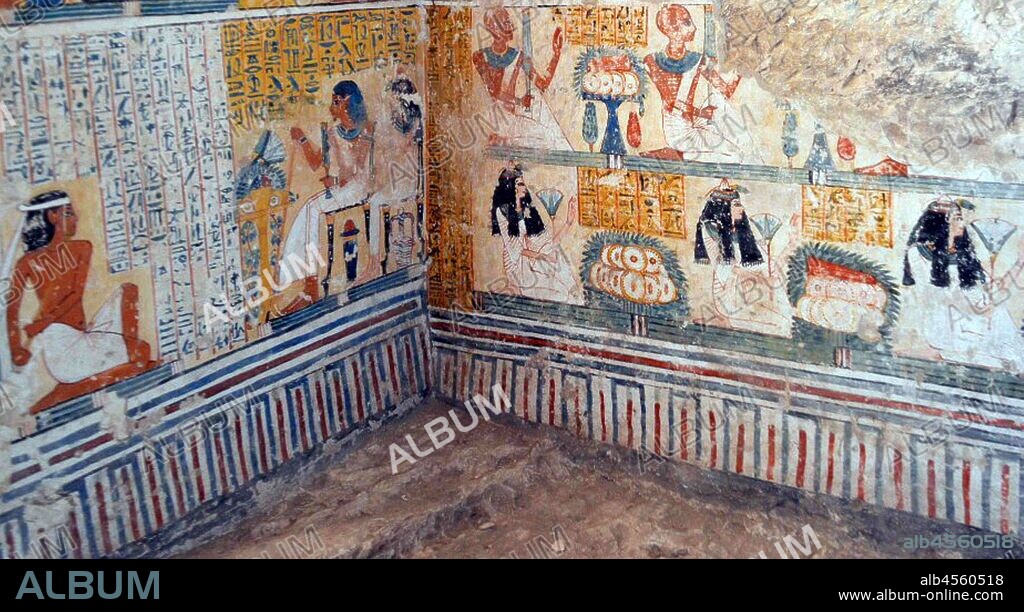alb4560518
Discovery of an 18th dynasty tomb, in Draa Abul-Naga.

|
Añadir a otro lightbox |
|
Añadir a otro lightbox |



¿Ya tienes cuenta? Iniciar sesión
¿No tienes cuenta? Regístrate
Compra esta imagen

Título:
Discovery of an 18th dynasty tomb, in Draa Abul-Naga.
Descripción:
Ver traducción automática
In September 2018, Egypt's Ministry of Antiquities, announced the discovery of an 18th dynasty tomb, in Draa Abul-Naga, a burial site for noblemen on the left bank of the Nile, near the Valley of the Kings. the tomb contains mummies believed to be a goldsmith called Amenemhat, who lived sometime between 1550 B.C. to 1292 B.C. The burial chamber has a niche at one end, which holds a statue of Amenemhat who sits on a chair next to his wife, Amenhotep. The Eighteenth Dynasty dates back to the 13th century BC, a period noted for some of the most well known Pharaohs, including Tutankhamen and Ramses II. The chamber has two burial shafts. In one, archaeologists found sarcophagi and remains dating from the later 21st and 22nd Dynasties. Those included the remains of a woman and her two grown children. She showed signs of bacterial bone disease and cavities. The other shaft contains funerary masks and statues depicting the goldsmith's family. The tomb hoses deteriorated mummies with their skulls exposed. It is the first known time Egyptian archaeologists have opened a previously sealed sarcophagus in front of the international media.
Crédito:
Album / Universal Images Group / Universal History Archive
Autorizaciones:
Modelo: No - Propiedad: No
¿Preguntas relacionadas con los derechos?
¿Preguntas relacionadas con los derechos?
Tamaño imagen:
5100 x 2784 px | 40.6 MB
Tamaño impresión:
43.2 x 23.6 cm | 17.0 x 9.3 in (300 dpi)
Palabras clave:
18 DINASTIA • 18. ª DINASTIA • 18A DINASTIA • 18A. DINASTIA • 18ª DINASTIA • AMENEMHAT • ANTIGUO EGIPTO • ARQUEOLOGIA • CAMARA FUNERARIA • CAMARA MORTUORIA • CAMARA SEPULCRAL • DECIMOCTAVA DINASTIA • DESCUBRIMIENTO • DINASTIA XVIII • EGIPCIA • EGIPCIAS • EGIPCIO • EGIPCIOS • EGIPTO • EGYPTIAN • ENTIERRO • MOMIAS • MUERTE • NILE • NILO (RIO) • NILO • ORFEBRE • RIO NILO • SEPULCRO • SEPULTURA • SIGLO XIII A. C. • TEBAS • TUMBA • TÜRBE • VALLE DE LOS REYES
 Pinterest
Pinterest Twitter
Twitter Facebook
Facebook Copiar enlace
Copiar enlace Email
Email
